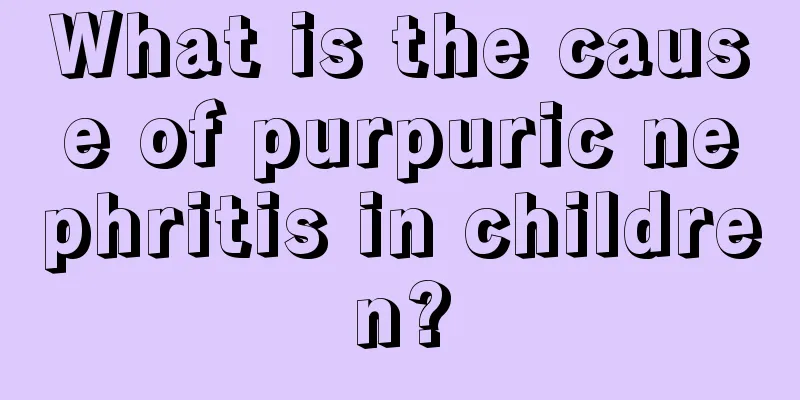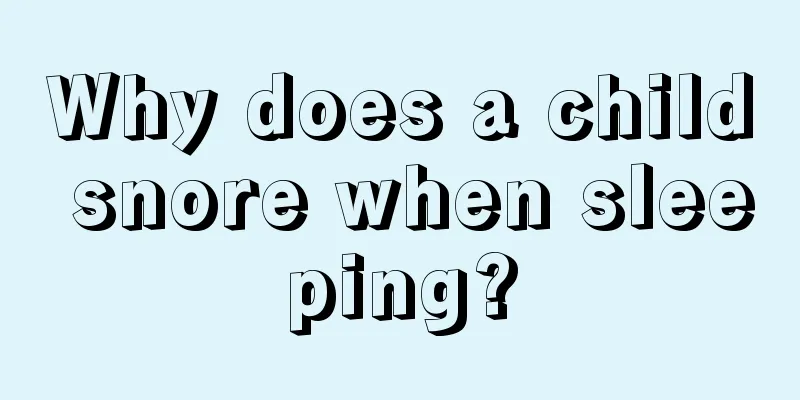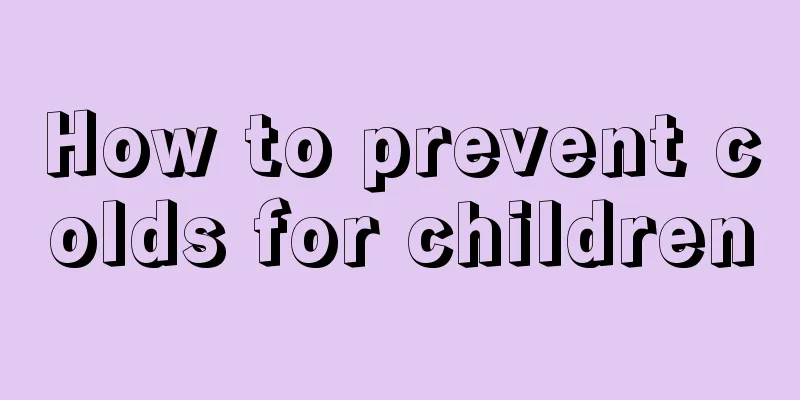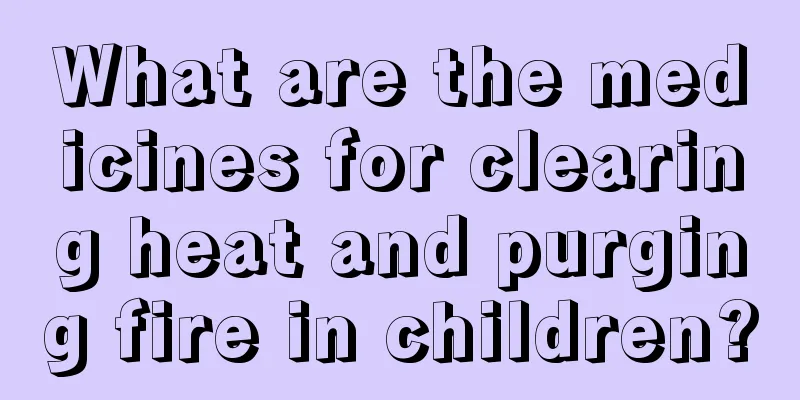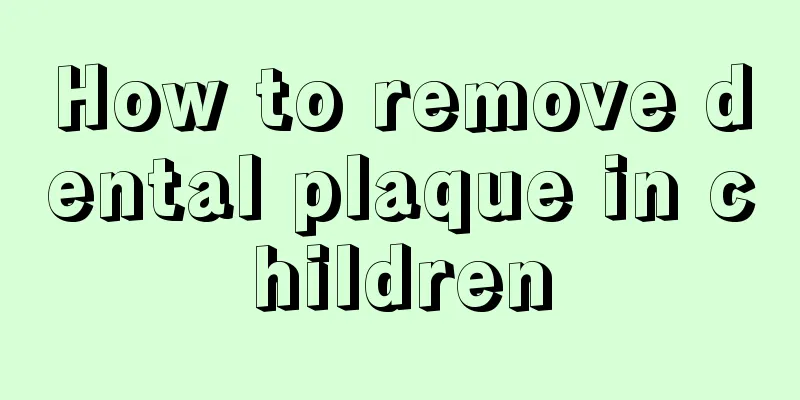What to do if your child has ear pain during a fever
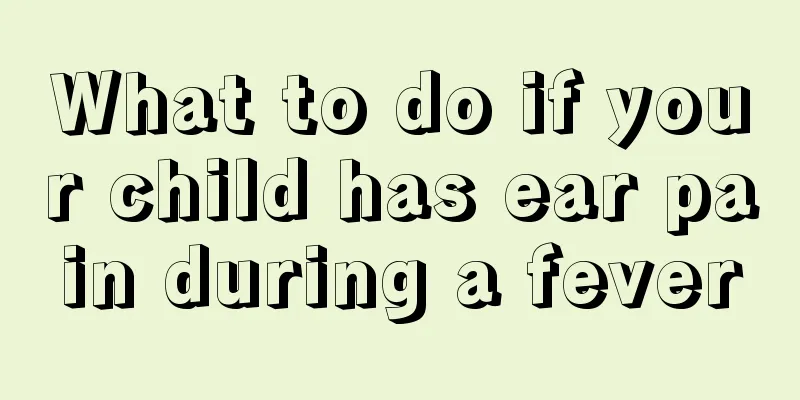
|
When children are at home, they may have a fever due to catching a cold or other reasons. If the parents are experienced, they can handle this situation well. It can be very dangerous if the parents have no experience. If a child's body temperature is too high, it may damage the brain nerves, so correct treatment must be given. Some children experience ear pain when they have a fever. What should parents do? Children with fever and ear pain should be given antibiotics, preferably under the guidance of a doctor. What should I do if my child has a fever? 1. First aid measures (1) You can apply a cold, wet towel to your forehead. It is better to put ice cubes in a waterproof plastic bag and wrap it in a dry towel to apply to your head and neck. You can also apply it to your armpits and groin for better results. (2) Dilute 75% alcohol with half the amount of water, then use a small towel to wet the alcohol and wipe the head, neck, armpits, chest, back and limbs. If the child's limbs are cold or the skin develops chicken skin after rubbing, you should use warm water slightly lower than the skin temperature to wipe the limbs until they turn red and warm again. (3) While doing physical cooling, you should also take antipyretics. If you have a history of high fever and cramps, you should also take sedatives. If your home is far from a hospital and transportation is inconvenient, it is best not to rush to the hospital regardless of anything if you have a high fever. You can first perform the above-mentioned emergency treatment at home. 2. Cooling method (1) Traditional physical cooling method Place the child in a quiet, cool, well-ventilated place. Use a cold towel or cold water bag to apply to the forehead, armpits, groin and other parts, or use an ice bag wrapped in cloth as a pillow on the head or place it on the above-mentioned parts. You can also use cold water (28-30℃) or alcohol (30-50%) to bathe the limbs, both sides of the torso and the back. If the child develops pale skin or cold skin during sponge bathing, stop immediately. Cold saline (30-32°C) enema can also be used, which is more suitable for those suspected of poisoning. It can reduce the temperature and facilitate the collection of stool samples for examination. (2) Drug cooling method For immature children, infants and weak children, antipyretics are generally not used to reduce fever; children aged 0 to 23 months can take Baifuning (antipyretic oral) drops for children, and children aged 2 to 12 years can take Baifuning (antipyretic) solution or chewable tablets for children, once every 4 to 6 hours. The advantage of this antipyretic is that it is absorbed quickly after oral administration and takes effect within 30 minutes. It does not have the irritation to the gastrointestinal tract like traditional antipyretic and analgesic drugs and reduces the impact on white blood cell and platelet function. (3) Acupuncture cooling method 3. Symptomatic treatment (1) When the fever is high, water loss increases and appetite decreases, so water and electrolytes should be replenished in time; (2) For patients who are irritable, have recurrent convulsions, or for whom general cooling measures are ineffective, chlorpromazine and promethazine may be used as appropriate. 4. Treatment methods targeting the cause of the disease For high fever caused by infection, effective antibiotics should be selected according to the condition. Local infection lesions should be cleared promptly. High fever caused by non-infectious diseases also requires appropriate treatment measures based on different causes. When a child has symptoms of fever, parents should make certain adjustments to the child's diet and should give the child more low-calorie foods, preferably easily digestible liquid or semi-liquid foods. For example, boil some milk or rice soup for your baby. Don't let your children eat too much fruit, let them drink more water, and never let them overeat. |
<<: What to do if a child has enlarged nasal conchae
>>: What to do if your child has a fever at night
Recommend
Causes of high white blood cell count in children
Due to respiratory infections or inflammation cau...
What to do if your two-year-old baby cries while sleeping at night
My child is just two years old. He didn't cry...
What to do if your child grinds his teeth
When children are teething, they are prone to tee...
How do you know if your baby is zinc deficient?
We all know that zinc deficiency in babies is a v...
What are the symptoms of baby fever?
Since many young parents have no experience in ha...
Measles usually occurs after fever
Most of the time, the problem of growing rashes o...
Children with rhinitis and runny nose
Because children have low body resistance, they a...
What causes breathlessness in babies?
The normal breathing rate of a newborn baby is 40...
What to do if your child has knee pain
What should I do if my child has knee pain? What ...
What should I do if my child’s hand is fractured or dislocated?
The human hand is a part of the body that is pron...
4 month old baby drooling
It is normal for children under one year old to d...
What is the cause of blood in children's stool?
The most common cause of bloody stools in childre...
What are the benefits of baby swimming in summer
Summer is a relatively hot season. At this time, ...
Can a one-year-old baby eat yogurt?
Yogurt is an essential dairy product in most fami...
Causes of high red blood cell count in children
If a child's red blood cell count is high, pa...
